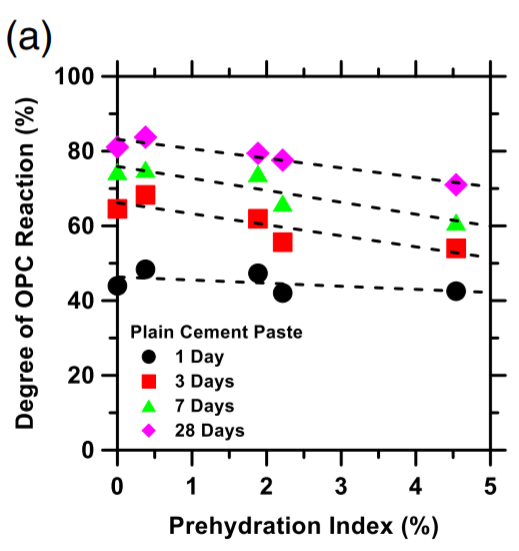New insights into the prehydration of cement and its mitigation
Abstract
Ordinary Portland cement (OPC) prehydrates during storage or handling in moist environments, forming hydration products on or near its particles’ surfaces. Prehydration is known to reduce OPC reactivity, but the extent of prehydration has not yet been quantitatively linked to reaction rate and mechanical property changes. A series of experiments are performed to develop a better understanding of prehydration, by intentionally exposing an OPC powder to either water vapor or liquid water, to investigate the extent to which premature contact of OPC with water and other potential reactants in the liquid and/or vapor state(s) can induce differing surface modifications on the OPC grains. Original results obtained using isothermal calorimetry, thermogravimetric analysis and strength measurements are correlated to a prehydration index, which is defined for the first time. The addition of fine limestone to a mixture formed using prehydrated cement is shown to mitigate the detrimental effects of prehydration.
